Comets are true marvels of the expansive universe we live in, large astronomical bodies that fly through the depths of space. Every few centuries, the people of Earth get lucky enough to view one of these passing comets with the naked eye, as it crossed the path of our planet and the Sun on its extraordinary journey. These comets sometimes flash so brightly, and light up the sky, leading to them being named Great Comets by astronomers. These pictures show us 19 momentous occasions, in chronological order, when Great Comets have shot over our heads, in the viewing opportunity of a lifetime!
1. The Great Comet of 1577, seen over Prague on November 12
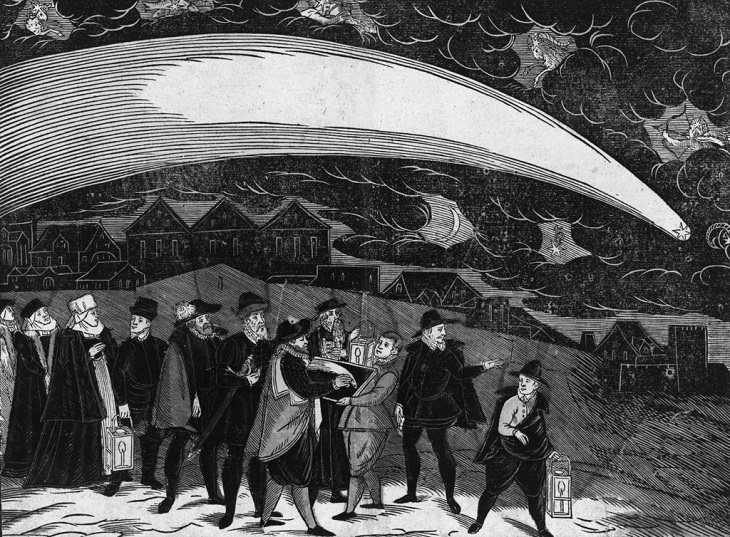
(Engraving made by Jiri Daschitzky (Jiřrí Jakubuv Dačický), Wikimedia Commons)
2. The Great Comet of 1680, the first comet discovered by telescope, officially designated C/1680 V1, also known as Kirch's Comet and Newton's Comet
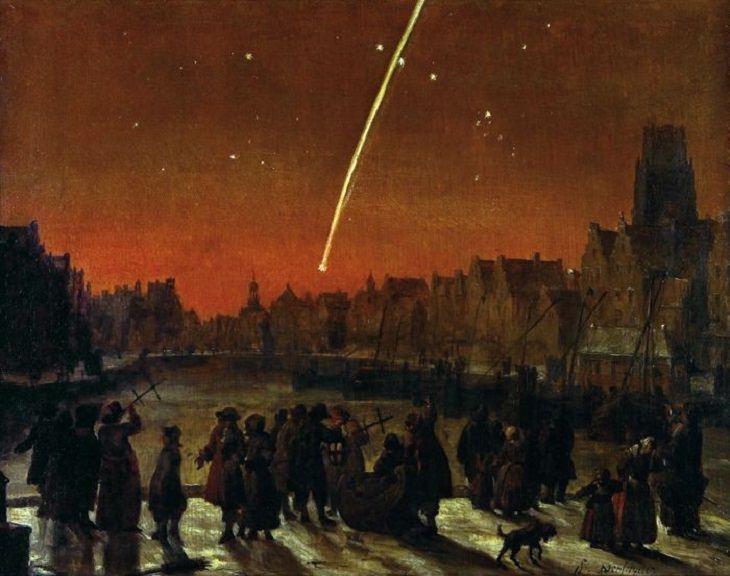
(The Great Comet of 1680 passing over Rotterdam, painted by Lieve Verschuier, Wikimedia Commons)
3. The Great Comet of 1744, which was visible to the naked eye for several months during its passing, officially designated C/1743 X1, also known as Comet de Chéseaux and Comet Klinkenberg-Chéseaux
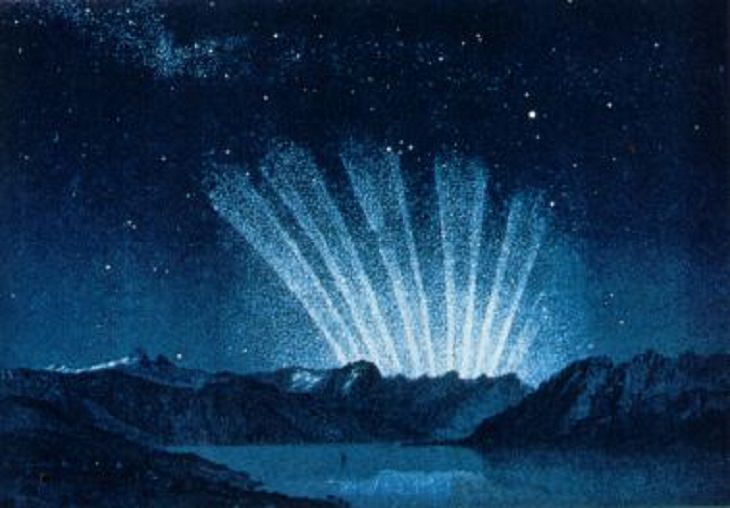
(The tails of the Great Comet of 1744, as they extend above the horizon before sunrise on March 9, 1744, by Amedee Guillemin, Wikimedia Commons)
4. The Great Comet of 1811, which remained visible from Earth for 260 days, officially designated C/1811 F1
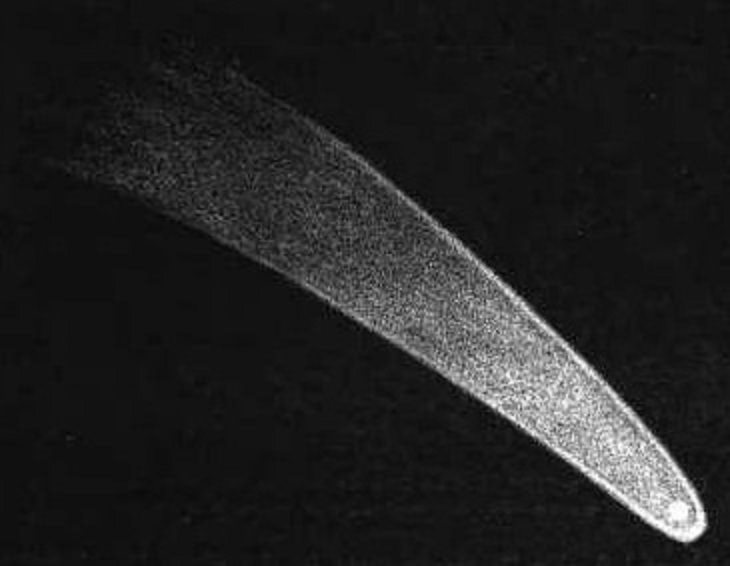
(The Great Comet of 1811, as drawn by William Henry Smyth and by Guillemin, after Smyth, Wikimedia Commons)
5. The Great Comet of 1819, was a bright visible comet first observed in Berlin, officially designated C/1819 N1, and also known as Comet Tralles
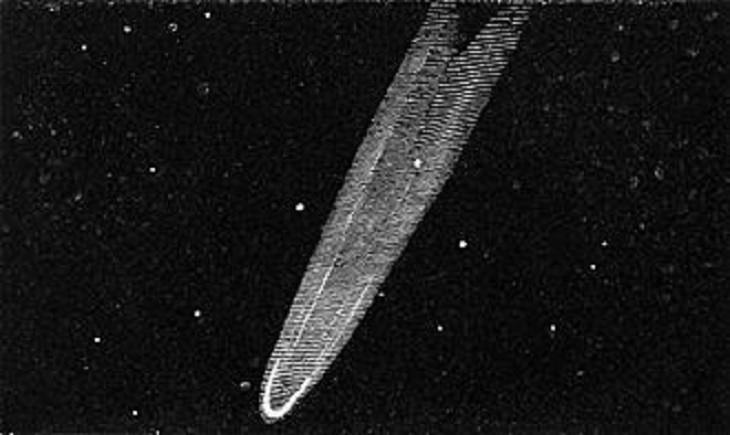
(Great Comet of 1819, from Uranography drawn by Ezra Otis Kendall, Wikimedia Commons)
6. Comet Donati, or Donati's Comet, the brightest 19th-century comet seen on Earth after the Great Comet of 1811 discovered in 1858, officially designated C/1858 L1 and 1858 VI
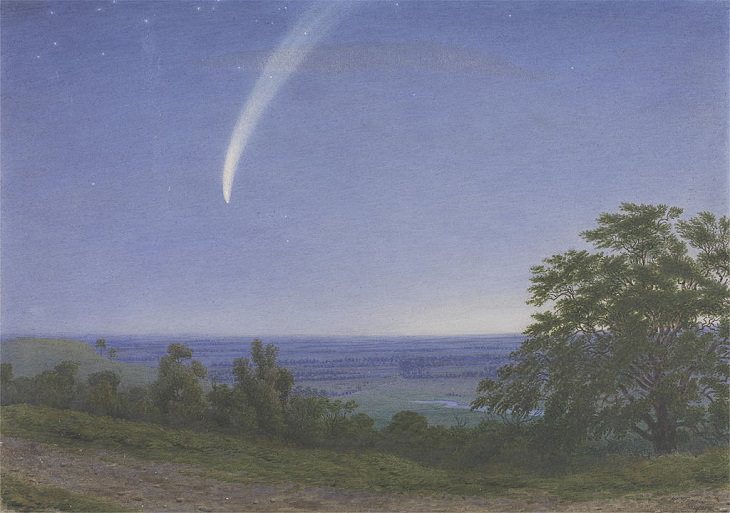
(Donati's Comet over Oxford, on 5 October 1858 by William Turner, Wikimedia Commons)
7. The Great Comet of 1861, visible to the naked eye for three months, officially designated C/1861 J1 and 1861 II
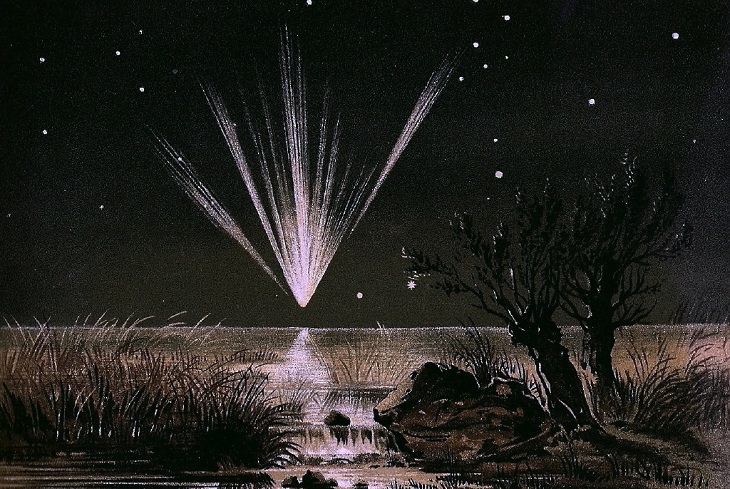
(The Great Comet of 1861 drawing by E. Weiss, Wikimedia Commons)
8. Coggia Comet, which could be seen with the naked eye in the summer of 1874, officially designated C/1874 H1
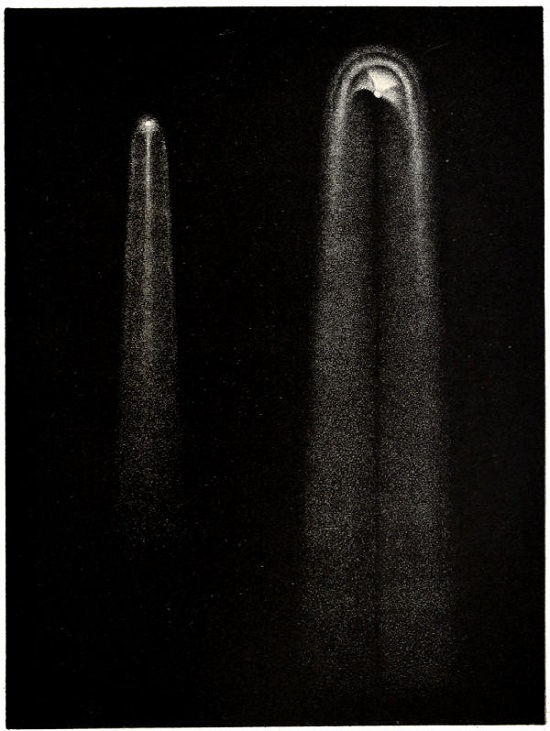
(By Robert Stawell Ball, Wikimedia Commons)
9. The Great Comet of 1882, which, at its brightest, was visible in daylight next to the sun, officially designated C/1882 R1, 1882 II, and 1882b
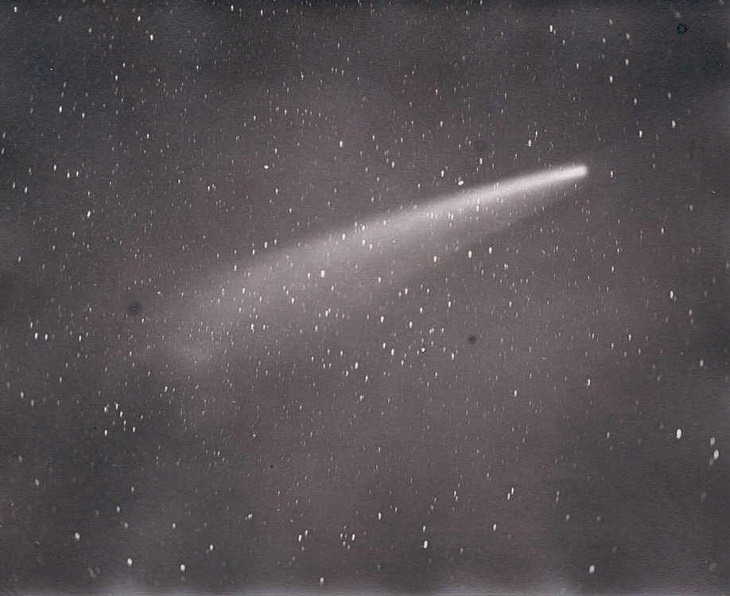
(Photograph of the Great Comet of 1882 as seen from Cape Town by Sir David Gill, Wikimedia Commons)
10. The Great Comet of 1901, visible only in the southern hemisphere, officially designated C/1901 G1, also known as Comet Viscara
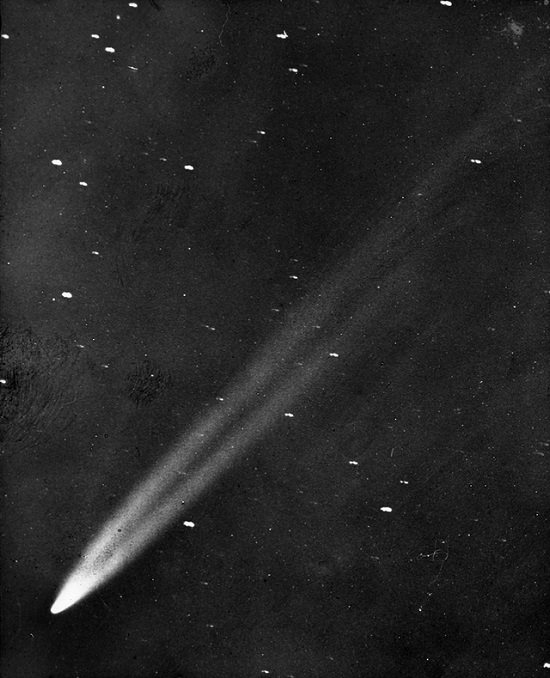
(Photograph of the Great Comet of 1901 taken on the United States Naval Observatory expedition to Sumatra, By Barnard, Edward Emerson, Wikimedia Commons)
11. Halley’s Comet in 1910, the only comet that is regularly visible on Earth, returning every 75 to 76 years, officially designated 1P/Halley
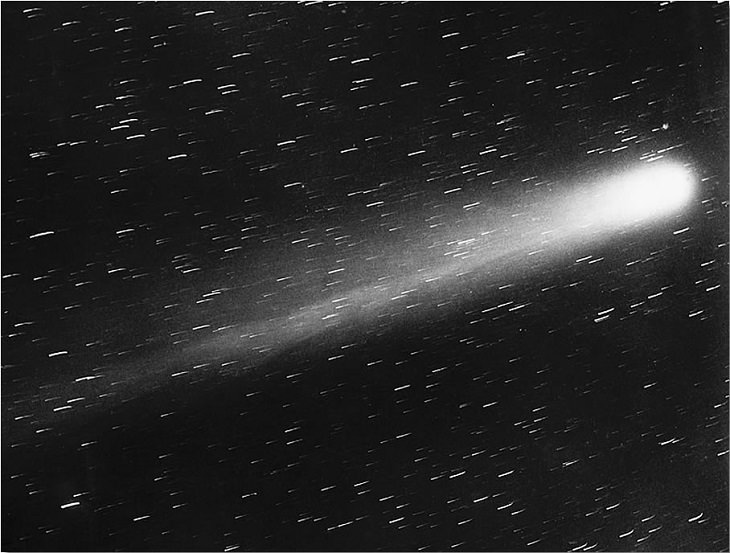
A Photograph taken of the approach of Halley’s Comet in 1910, by Professor Edward Emerson Barnard, Wikimedia Commons)
12. Comet Arend–Roland, discovered in 1957 Belgian astronomers Sylvain Arend and Georges Roland
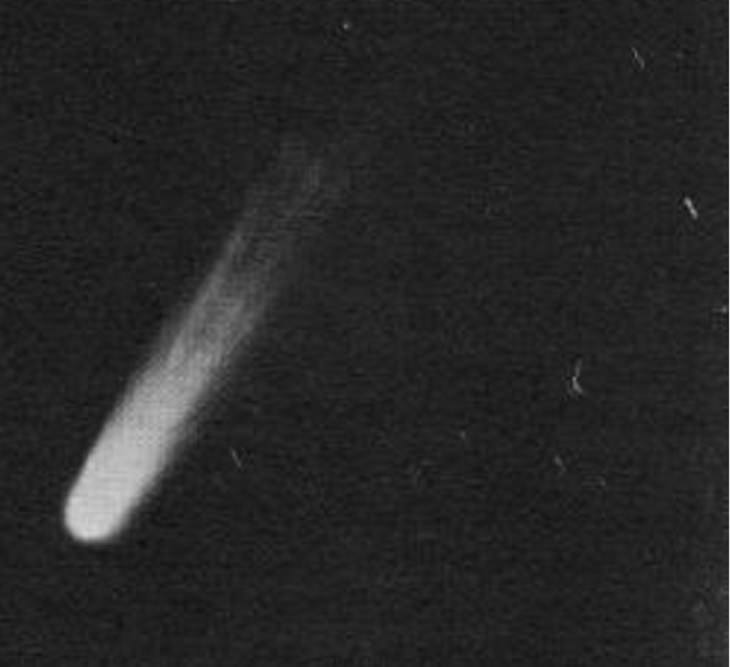
(By Kokorik, Wikimedia Commons)
13. Comet Ikeya–Seki, one of the brightest comets to pass by the Earth in the last 1000 years, officially designated C/1965 S1, 1965 VIII, and 1965f
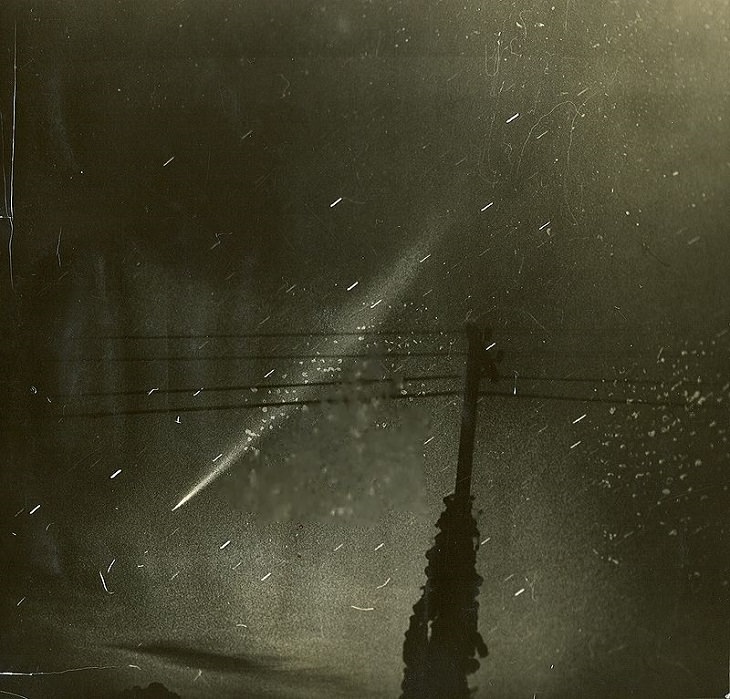
(By Maynard Pittendreigh, Wikimedia Commons)
14. Comet Kohoutek, a long term comet that returns only approximately every 100,000 years, officially designated C/1973 E1, 1973 XII, and 1973f
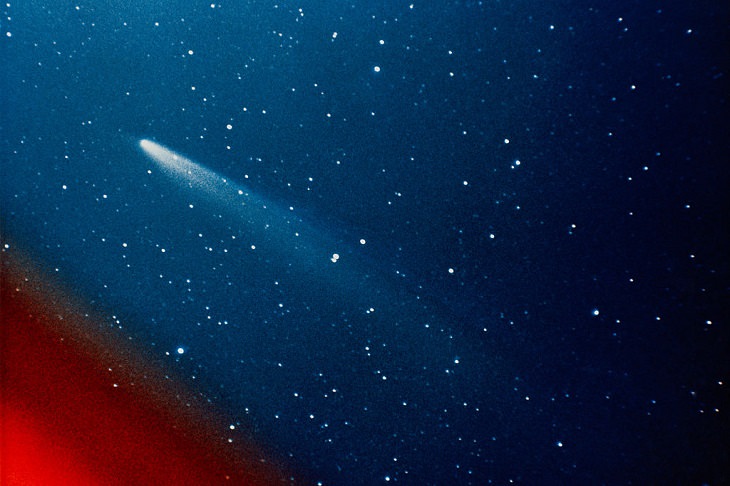
(By NASA, Wikimedia Commons)
15. Comet West, one of the brightest astronomical bodies to pass through the Solar System, in 1976, officially designated C/1975 V1, 1976 VI, and 1975n
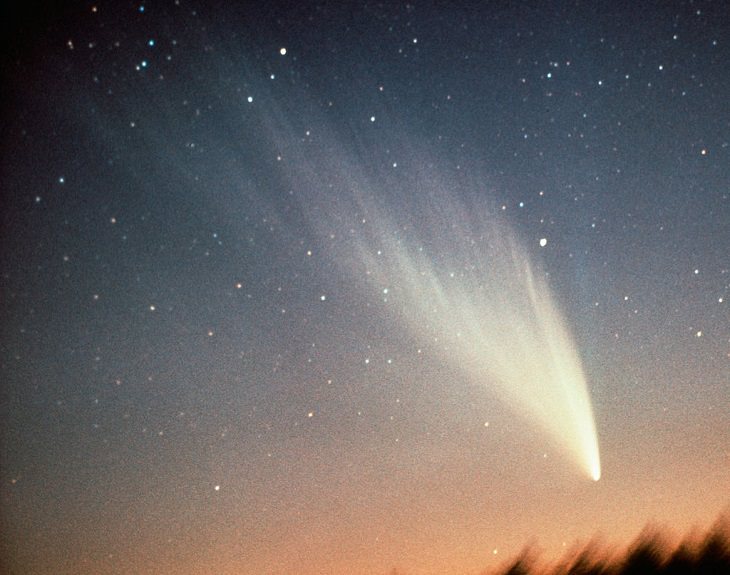
(By J. Linder/ESO, Wikimedia Commons)
16. Comet Hyakutake, came the closest to Earth than any other comet in the last 200 years, officially designated C/1996 B2
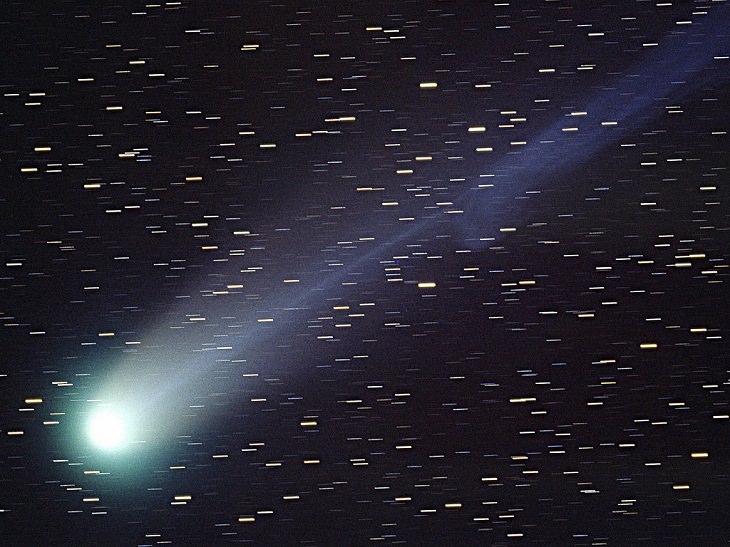
(By E. Kolmhofer, Wikimedia Commons)
17. Comet Hale–Bopp, which remained visible to the naked eye for 18 months, officially designated C/1995 O1
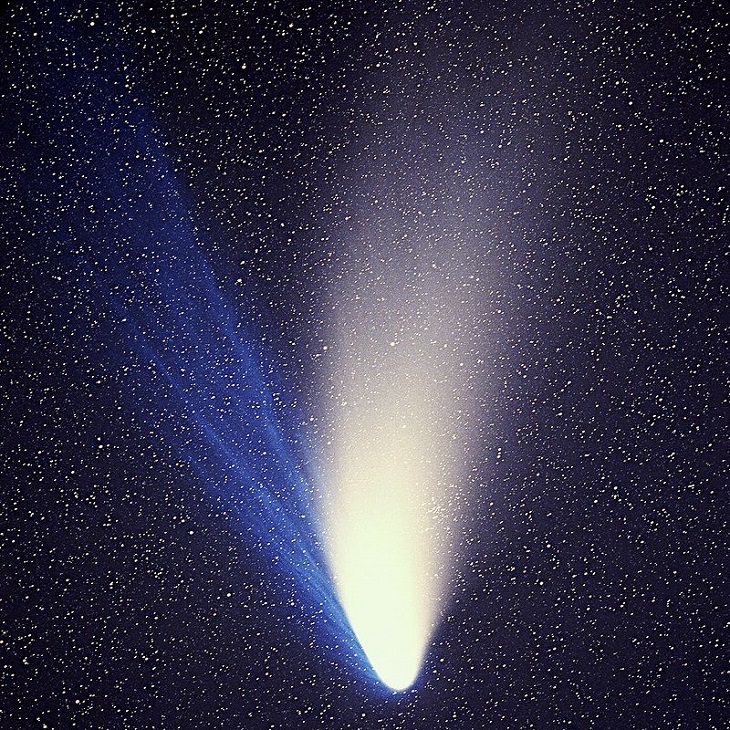
(By E. Kolmhofer, Wikimedia Commons)
18. Comet McNaught, easily visible in the southern hemisphere for January and February of 2007, officially designated C/2006 P1, also known as the Great Comet of 2007
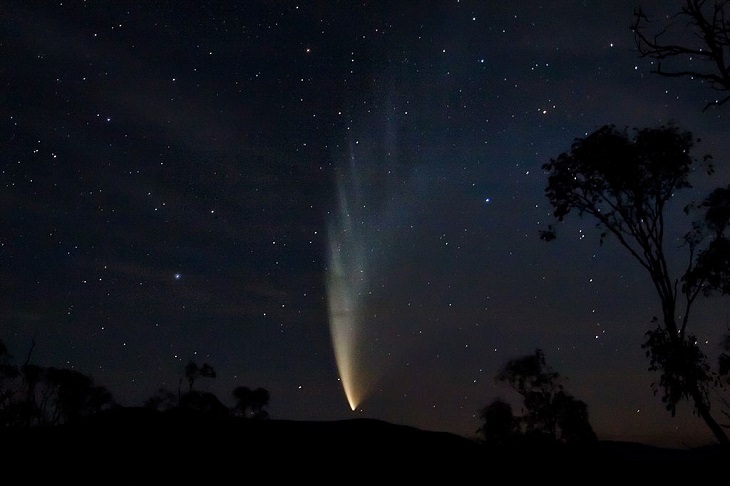
(Comet McNaught passing over Swift's Creek, Victoria on 23 January 2007, By fir0002flagstaffotos, Wikimedia Commons)
19. Comet Lovejoy, discovered in 2011 by amateur astronomer Terry Lovejoy, officially designated C/2011 W3 (Lovejoy)
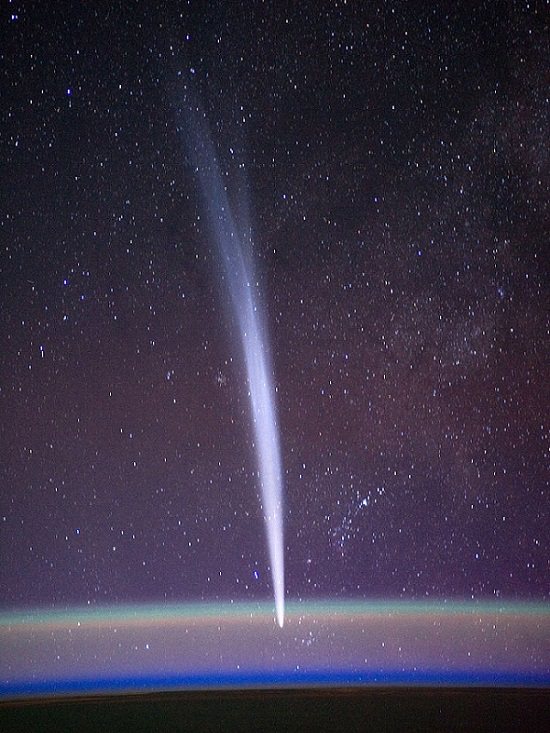
(By NASA/Dan Burbank, Wikimedia Commons)



















